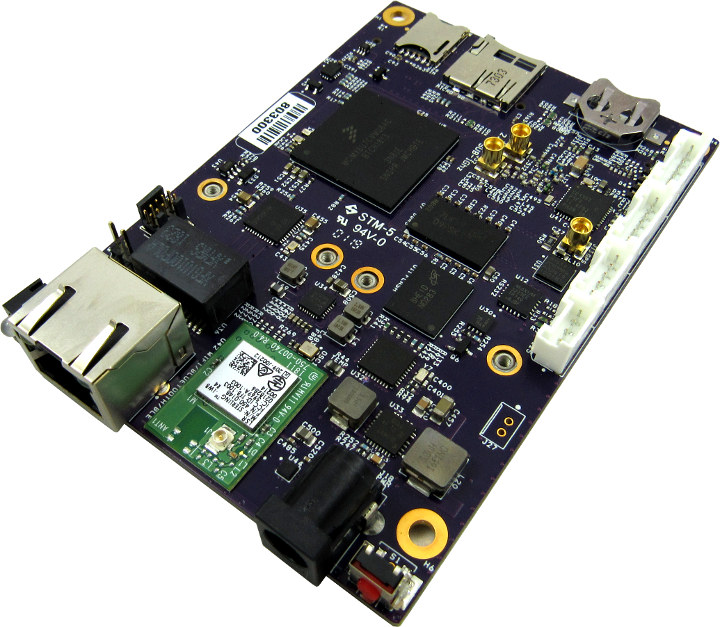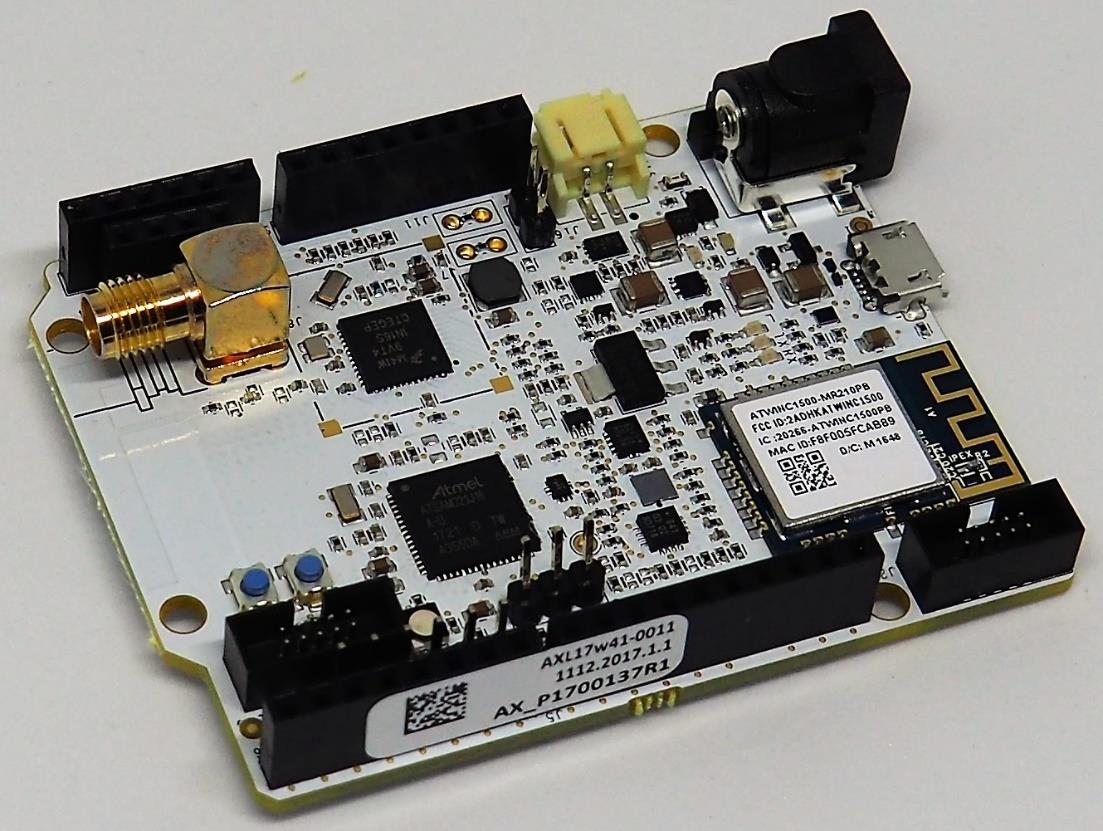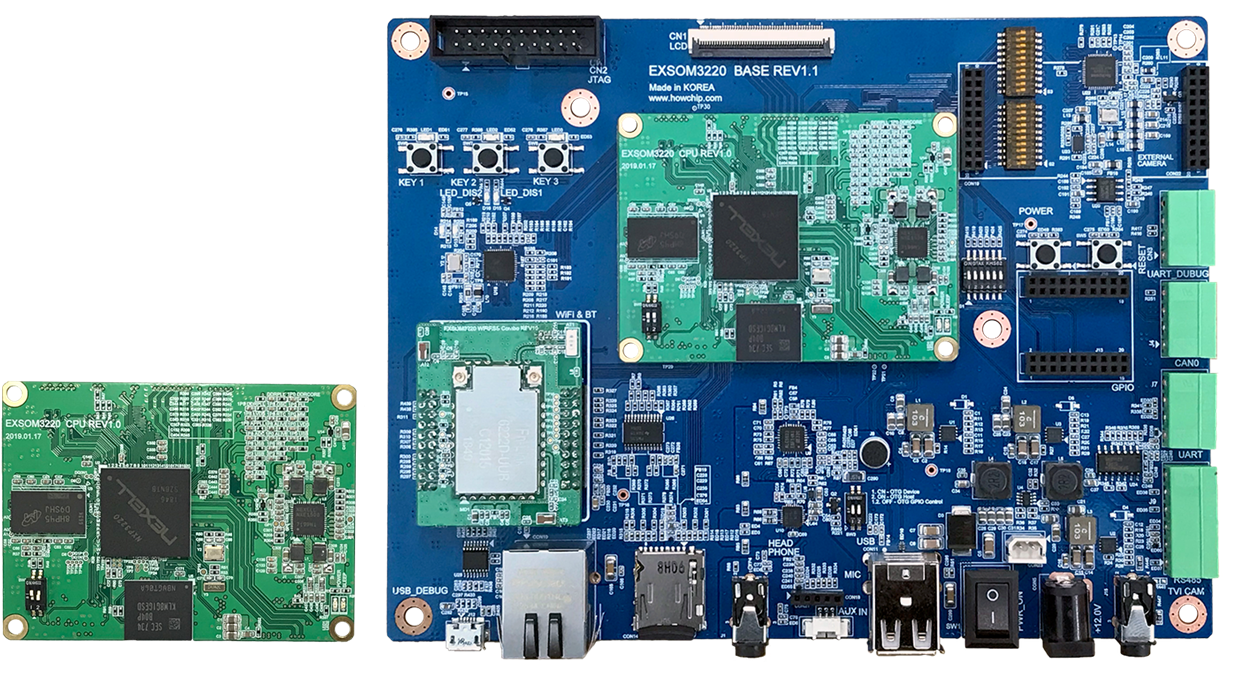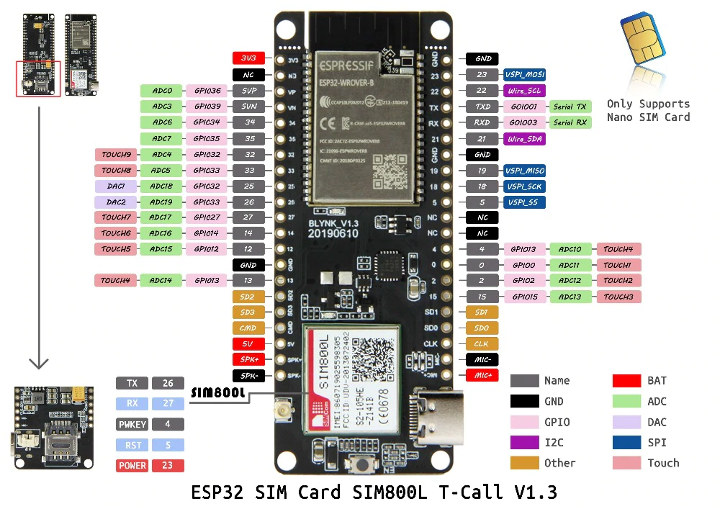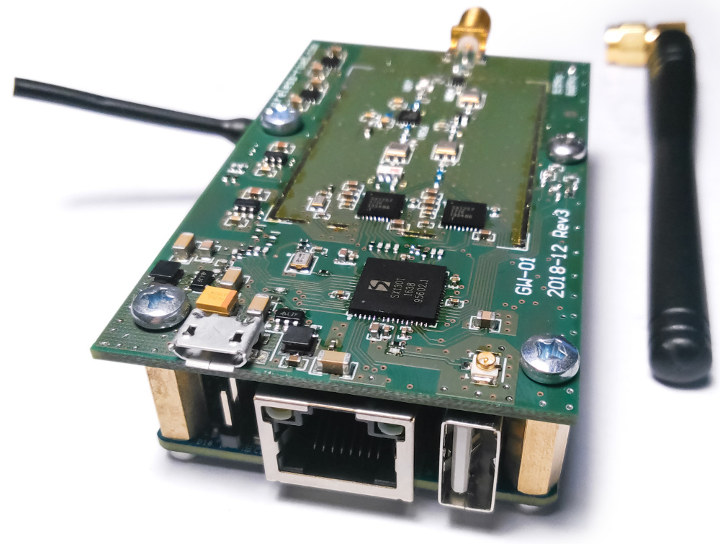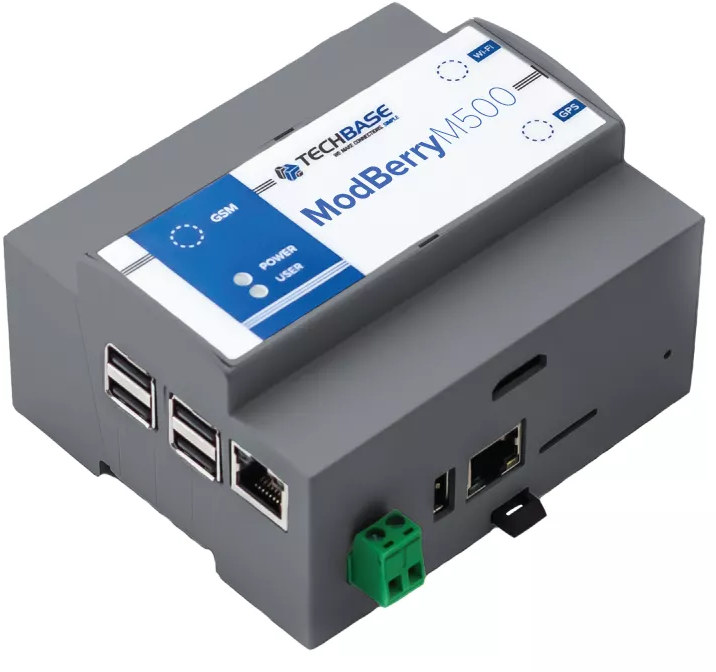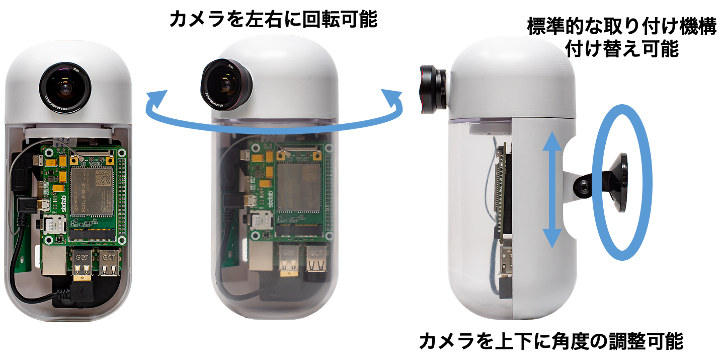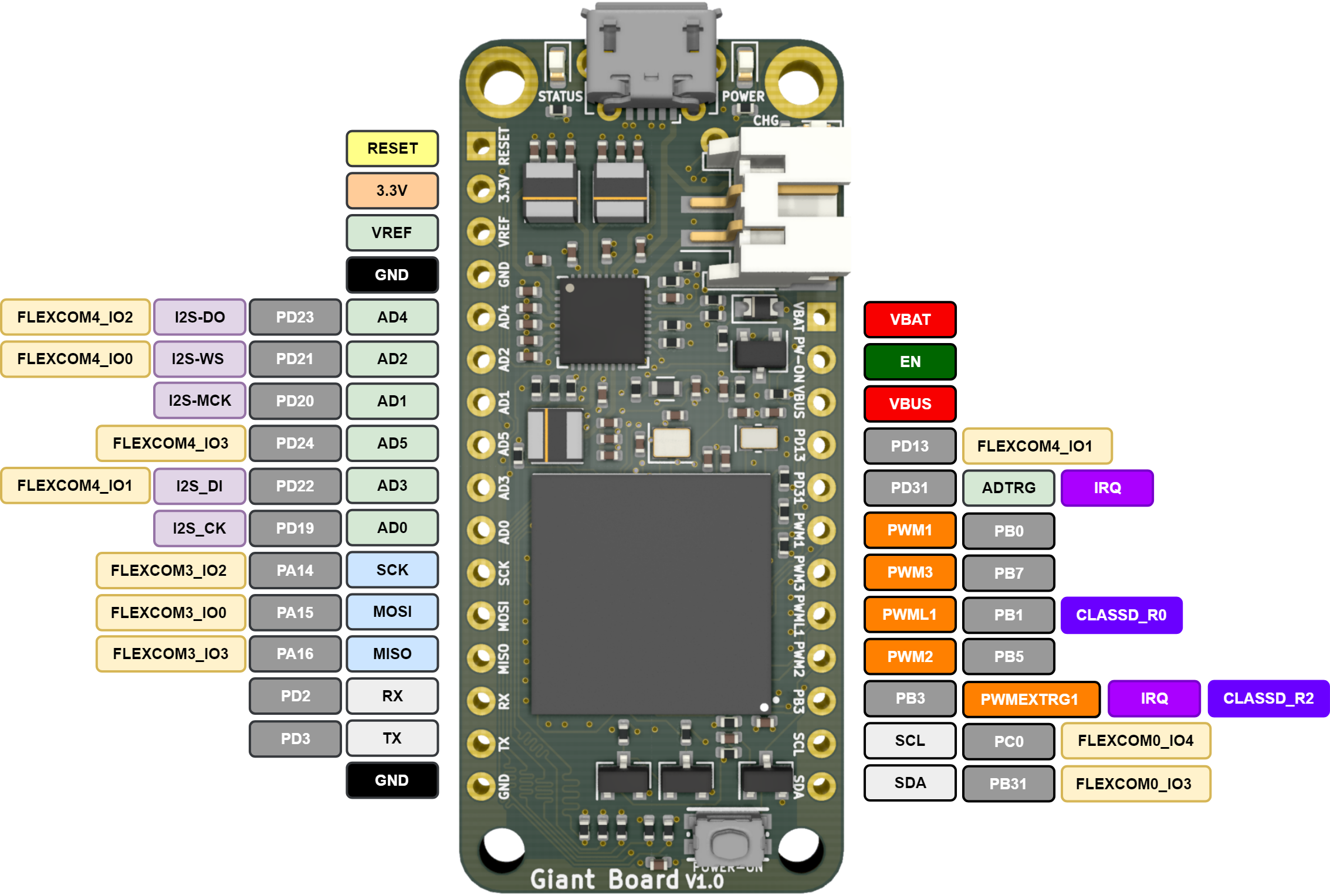Freescale/NXP i.MX6 based Gateworks Ventana single board computers have been around at least since 2013 and were initially targeting networking processing applications for the industry. They could be used into all sort of gateways with cellular or WiFi connectivity for instance, thanks to the presence of mini PCIe sockets. But the latest Gateworks Ventana GW5910 SBC does not exclusively relies on mini PCIe cards for wireless connectivity, as it includes an onboard Laird Sterling 802.11b/g/n WiFi & Bluetooth module, as well as optional TI CC1352P dual-band Wireless MCU supporting Sub-1GHz and 2.4GHz RF, and an optional on-board u-blox GPS module, which should lower the total cost compared to solutions with mini PCIe cards. Ventana GW5910 specifications: SoC – NXP i.MX6 Dual Core Arm Cortex-A9 SoC Processor @ 800MHz System Memory – 512MB DDR3-800 SDRAM Storage – 256MB Flash System Memory, microSD card slot, mSATA socket Connectivity Gigabit Ethernet Port Onboard […]
Arduino Compatible ASME TIGER Board Supports Thread on NXP Kinetis KW41Z WiSoC
The new Arrow ASME Tiger board is the latest addition to the ASME line up, with an eye towards IoT hardware prototyping. The board carries two MCUs for different types of development depending on the operators need. The board is Thread and WiFi ready, and the Tiger is also Arduino compatible. The MCU’s are as follows: The ATSAMD21J18A-64 Ultra-low-power microcontroller using the 32-bit ARM Cortex-M0+ processor. The WiSoC is the KW41Z which is an ultra-low-power, highly integrated single-chip device that enables Bluetooth® low energy (BLE) v4.2 and IEEE® 802.15.4 RF connectivity for portable, extremely low-power embedded systems. The working unit is for very low power applications. The integrated balun reduces system cost and board area, and the sensors are plentiful and easy to access. You’ll find a user guide (PDF), as well a bootloader and sample code on Github. Specifications for the SMART SAMD21 Memory 256KB in-system self-programmable Flash 8KB […]
Howchip Introduces Scorpion 3 & Scorpion 5 Boards Powered by Nexell Processors
Howchip has announced 2 development boards based on Nexell processors. Even though pricing is not available yet for these boards, we can now know their main features. Both development boards have been launched as COM & carrier development kits. Scorpion 3 is mainly focused for developments where a powerful dual-core Arm Cortex-A7 NXP3220 featured with Linux 4.14 can be enough, and Scorpion 5 seems to be focused for applications which may have more intensive requirements, for instance in terms of user interface, being based on a quad-core Arm Cortex-A9 NXP4330Q featured with Android Nougat and with UI specific features like 3D-Graphics Accelerator. Even though there is not so much information, Howchip also announces as “coming soon” the Scorpion 1 board, based on Exynos i T200 as an integrated IoT solution. Howchip Scorpion 3 Howchip Scorpion 3 is a great embedded computer in a board whose form factor is only 68x50mm. […]
$15 TTGO T-Call Board Combines ESP32 WiFi & Bluetooth SoC with SIM800 GPRS Module
LilyGo has launched several TTGO boards usually based on Espressif ESP8266 or ESP32 over the years. Here’s another that could be useful if 2G cellular networks have not sunset in your country: TTGO T-Call. The new board combines ESP32 WiFi & Bluetooth WiSoC with SIMCom SIM800L GPRS module, and also happens to rely on a USB-C port for power and programming instead of the more common micro USB port on this type of hardware. TTGO T-Call board (BLINK_V1.3) specifications: Wireless Module – ESP32-WROVER-B based on ESP32 dual core Xtensa processor @ 240MHz with 520kB SRAM on-chip, 4MB QSPI flash, 8MB PSRAM Connectivity – WiFi 4 802.11 b/g/n (2.4 GHz) up to 150 Mbps Bluetooth 4.2 Classic + LE Cellular – 2G GSM/GPRS via SIMcom SIM800L module + Nano SIM card slot USB – 1x USB-C for power and programming (via CP2104) Expansion – 2x 21-pin headers with UART, SPI, SDIO, […]
M2M-IoT GW-01 LoRaWAN Gateway is equipped with Orange Pi Zero H2+ SBC
M2M-IoT has developed a new LoRa gateway. The gateway, GW-01, is based on Orange Pi Zero H2+ board. While it is new, it has a lot of useful features. The new GW-01 gateway operates in the 868MHz or 915MHz LoRa frequencies and has -139 dBm sensitivity. Furthermore, the GW-01 is fully functional. It is also an open source low-cost solution to developing a LoRaWAN network. In addition, the gateway supports both OpenWrt, and Armbian distributions, and you’ll find documentation for both on Github. Another great thing about the gateway is that it has two boards. Also, the first board, which is on top, is based on SX1301. This 8 channel LoRa concentrator implements the LoRa physical interface. Now, the second board is at the bottom. It is also the model that the whole gateway was based on. This board is the OrangePi Zero H2+ 256MB (RAM) development board. The gateway […]
ModBerry M500 Industrial Computer Gets Upgraded to Raspberry Pi 4
We first wrote about Modberry M500 industrial computer when it was upgraded from Raspberry Pi 3 to Raspberry Pi 3 B+, and added PoE support. With the launch of Raspberry Pi 4 model B, it should come as no surprise that Techbase has now announced Modberry M500 would be available with the latest board from the Raspberry Pi Foundation. Modberry M500 RPI 4 preliminary specifications: SoC – Broadcom BCM2711B0 quad-core Arm Cortex-A72 processor @ 1.5 GHz with VideoCore VI GPU System Memory – 1GB, 2GB or 4GB LPDDR4 Storage – 4GB eMMC flash (TBC), and/or 8GB micro SD card Video & Audio Output – HDMI 2.0 up to 4K @ 60Hz and 3.5mm jack for CVBS (composite + stereo audio) Connectivity True Gigabit Ethernet, up to 2x optional 10/100M Ethernet ports Dual band 802.11 b/g/n WiFi and Bluetooth 5.0 LE Optional Zigbee, LTE/3G, GPS, WiFi, and Bluetooth cards USB – […]
S+ Camera Basic Combines Raspberry Pi 3 Board and LTE Shield for Edge Applications
Soracom is a company that provides global IoT network cellular connectivity for businesses in smart IoT agriculture, energy, consumer, manufacturing, transportation, and medical industries, and even provides free IoT SIM cards for evaluation (US/Canada only). The company has just announced the S+ Camera on its Japanese blog. The camera looks to features several off-the-shelf components including a Raspberry Pi 3 board and SixFab Raspberry Pi 3G-4G/LTE Base Shield V2 connecting to Soramcom network. It’s a little confusing as to why a cellular IoT company would develop an LTE camera since streaming video requires bitrates not normally associated with IoT. The blog post does provide a few more details however, as S + Camera is said to run SORACOM Mosaic software which enables “algorithms for edge processing cameras and management and operation of cameras”. That means it’s quite possible the video will not be streamed, but edge processing/computing usually means AI is […]
Microchip SAMA5 based Giant Board Launched on Crowd Supply for $50 and Up
Earlier this year we gave you details about some new development board, most especially about the Giant board. A tiny single board computer that runs Linux on Arm Cortex-A5 processor. This super tiny single-board computer (SBC) is based on the Adafruit Feather form factor. Unlike its name, the giant board is actually a small microchip. And it packs an awful lot of power for its size. The news is that it has launched on Crowd Supply for $50 and up. In addition, the giant board implements the power of size, which makes it unique. It squeezes SBC into a package the size of a microcontroller board. This will in turn relax memory, storage, and processing constraints. Consequently allowing you to effectively work on your projects. Another thing to know about the Giant Board is that it runs full Debian Linux. Giving developers and users access to an endless number of […]


